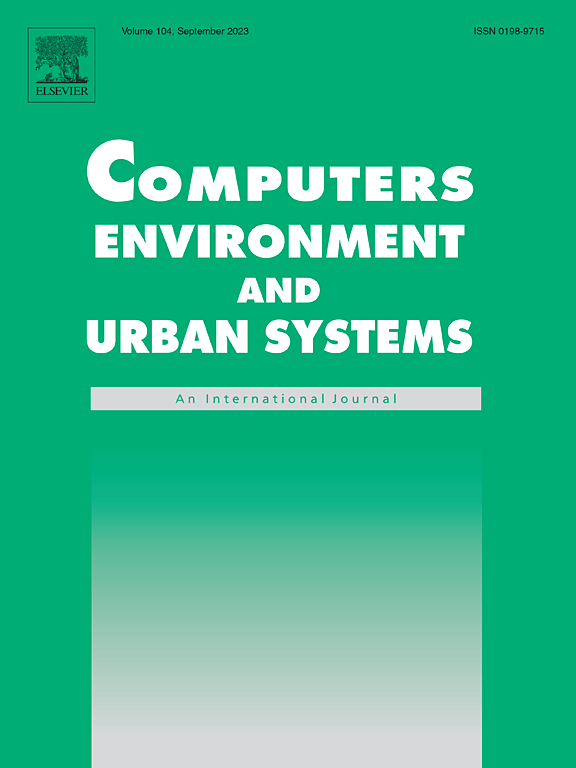城市视觉独特性:一个无地标的框架,从日常场景中量化城市的身份和独特性
IF 8.3
1区 地球科学
Q1 ENVIRONMENTAL STUDIES
Computers Environment and Urban Systems
Pub Date : 2025-09-06
DOI:10.1016/j.compenvurbsys.2025.102351
引用次数: 0
摘要
城市的视觉外观是由文化背景、地理特征、历史发展和政策决定等因素的复杂相互作用形成的。但衡量城市的视觉独特性仍然是一个挑战。以前的研究通常集中在标志性地标上,而忽略了人们可能会遇到的日常场景。通过研究不同的视觉模式如何以及在多大程度上构建城市的独特特征,我们提出了一个数据驱动的框架,从身份和独特性方面衡量视觉独特性。我们对日本六个访问量最大的城市的谷歌街景(GSV)图像进行了自下而上的视觉聚类。我们发现8个具有代表性的视觉集群解释了每个城市的视觉识别和相对独特性。这项研究展示了人工智能如何应用于视觉数据,从而揭示城市环境中的细微差异。在日益全球化的时代,旅游和城际往来频繁,城市独特的视觉特征的培养有助于避免城市景观的同质化,并通过塑造可想象的城市来刺激城市旅游的发展。本文章由计算机程序翻译,如有差异,请以英文原文为准。
Urban visual uniqueness: A landmark-free framework to quantify city's identity and distinctiveness from everyday scenes
The visual appearance of a city is shaped by a complex interplay of factors, including cultural backgrounds, geographical features, historical developments, and policy decisions. But measuring cities' visual uniqueness remains a challenge. Previous studies often focused on iconic landmarks, neglecting everyday scenes that people are likely to encounter. By examining how and to what extent different visual patterns build up unique characteristics of cities, we propose a data-driven framework to measure visual uniqueness in terms of identity and distinctiveness. We performed bottom-up visual clustering on Google Street View (GSV) images in the six most visited Japanese cities. We found that 8 representative visual clusters explain each city's visual identity and relative distinctiveness. This research demonstrates how artificial intelligence applied to visual data can reveal subtle differences in urban environments. In the era of growing globalization, with frequent tourism and intercity visits, the cultivation of a city's unique visual characteristics can help avoid the homogenization of urban landscapes, and stimulate the development of urban tourism by shaping an imageable city.
求助全文
通过发布文献求助,成功后即可免费获取论文全文。
去求助
来源期刊

Computers Environment and Urban Systems
Multiple-
CiteScore
13.30
自引率
7.40%
发文量
111
审稿时长
32 days
期刊介绍:
Computers, Environment and Urban Systemsis an interdisciplinary journal publishing cutting-edge and innovative computer-based research on environmental and urban systems, that privileges the geospatial perspective. The journal welcomes original high quality scholarship of a theoretical, applied or technological nature, and provides a stimulating presentation of perspectives, research developments, overviews of important new technologies and uses of major computational, information-based, and visualization innovations. Applied and theoretical contributions demonstrate the scope of computer-based analysis fostering a better understanding of environmental and urban systems, their spatial scope and their dynamics.
 求助内容:
求助内容: 应助结果提醒方式:
应助结果提醒方式:


